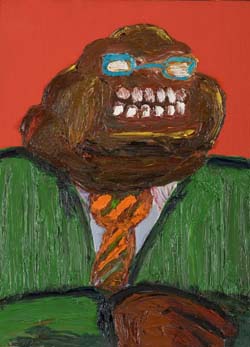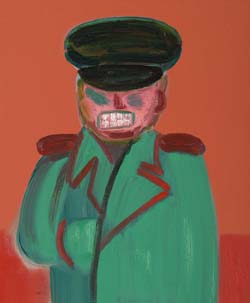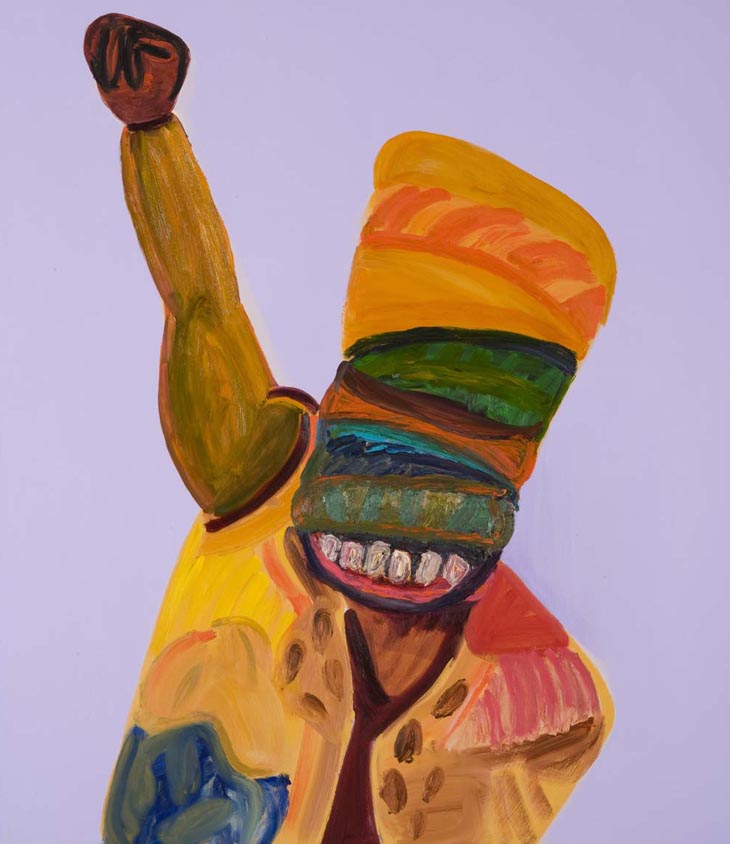
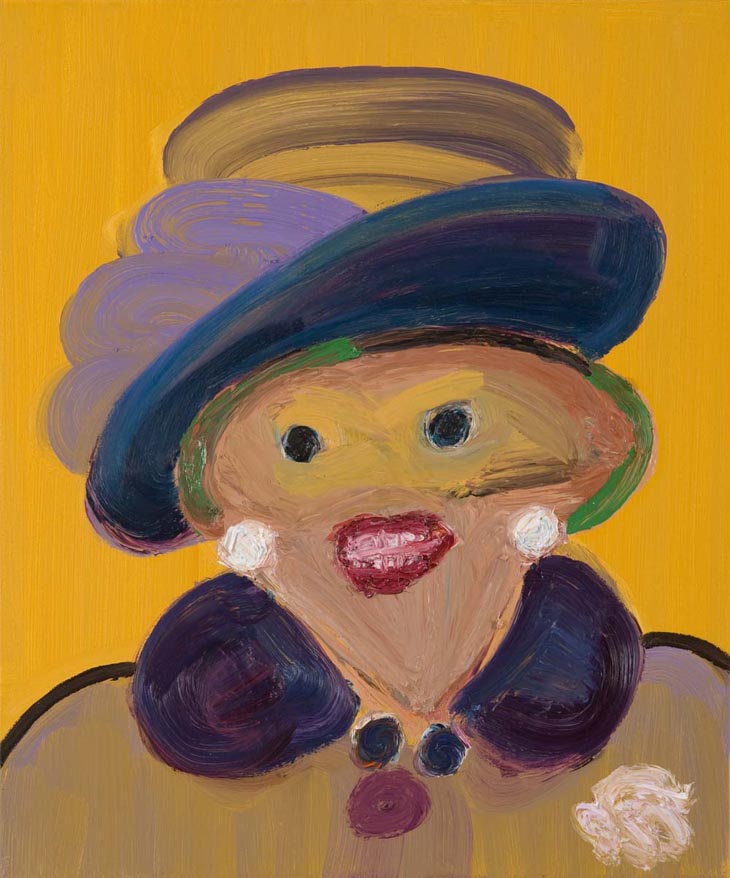
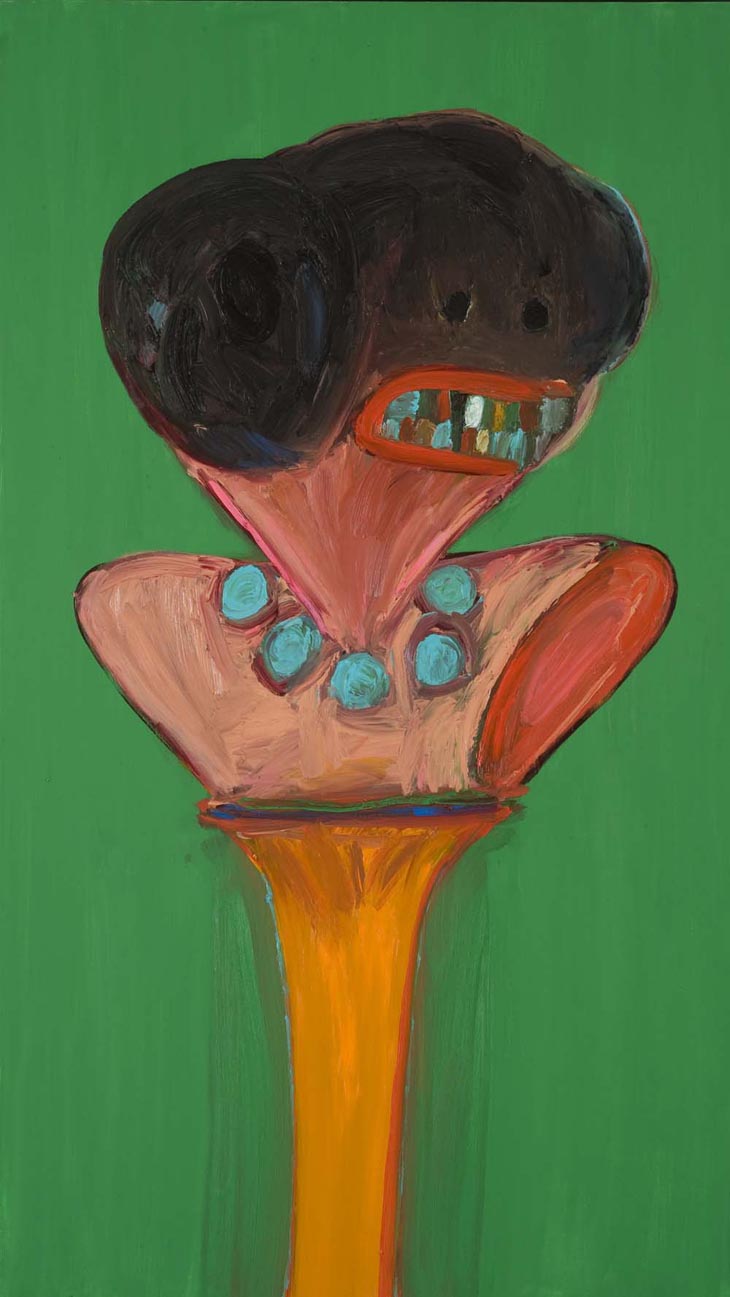
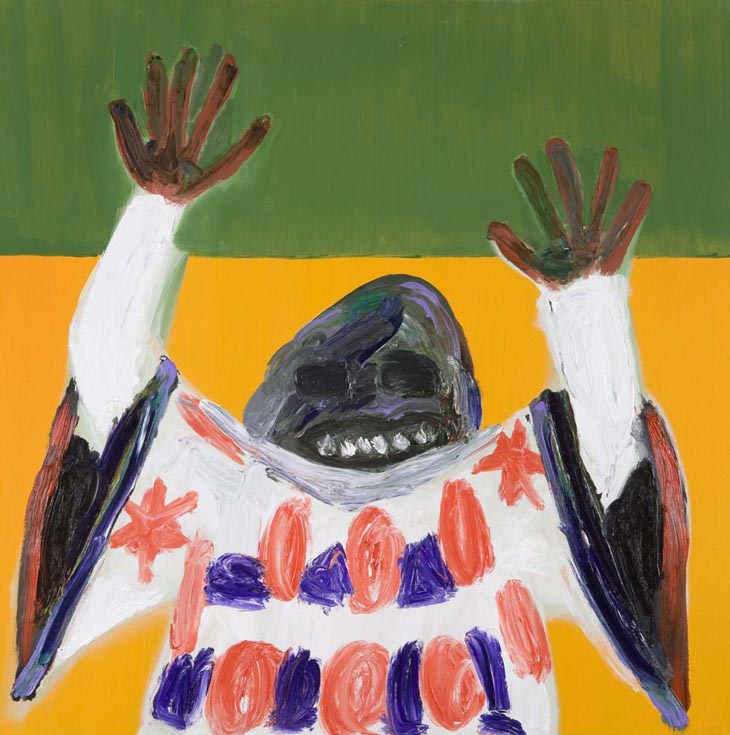
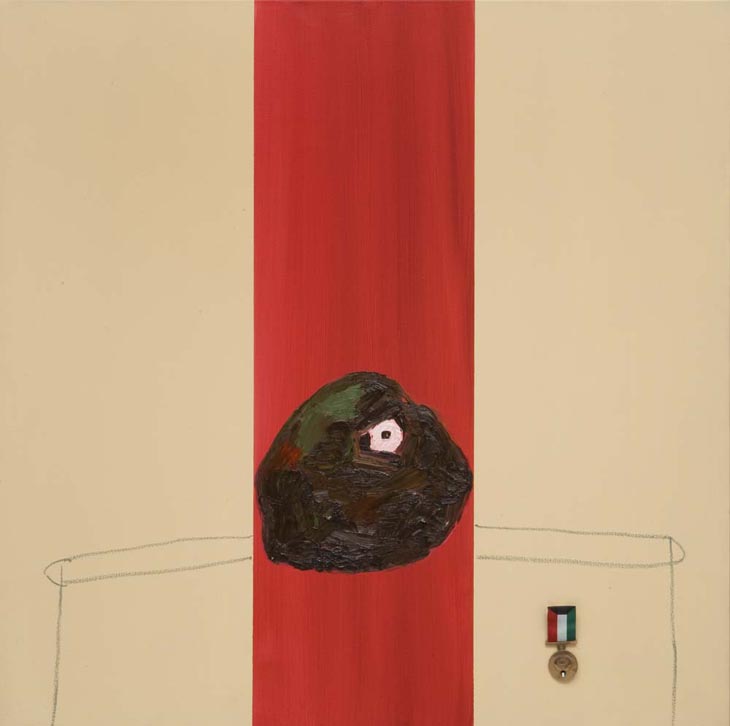
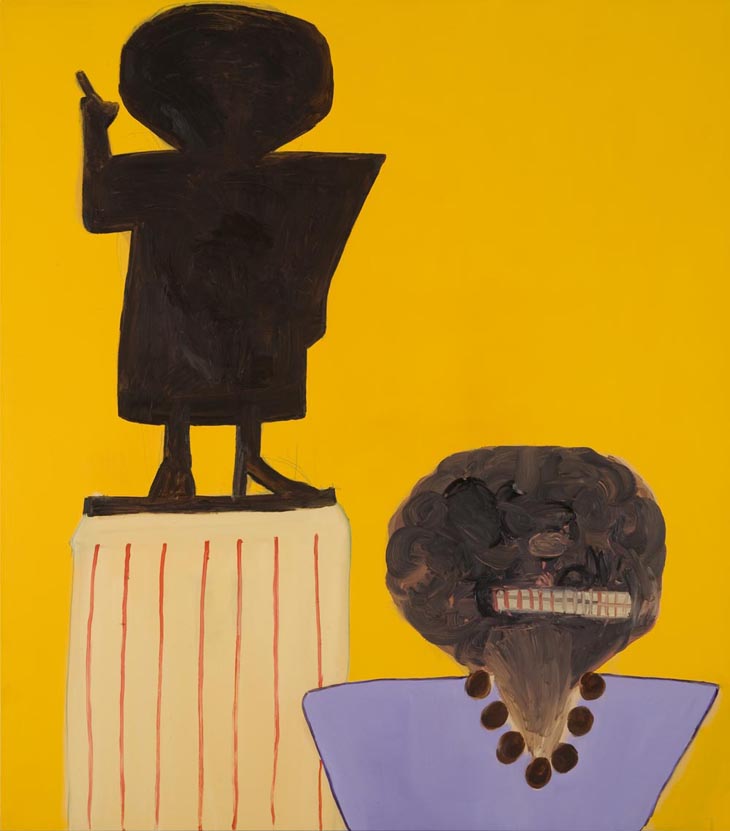
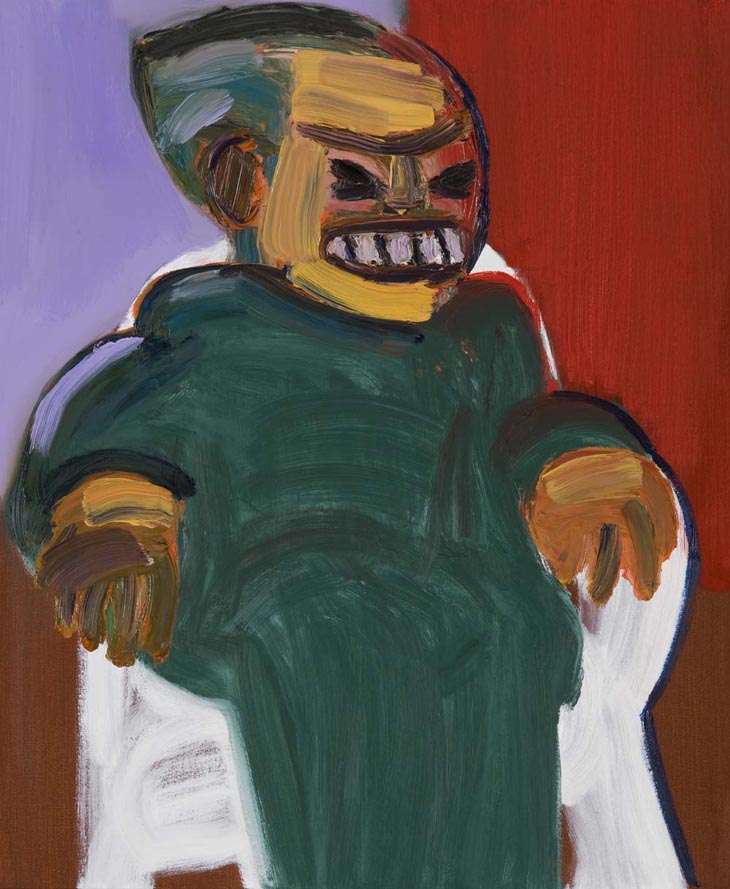

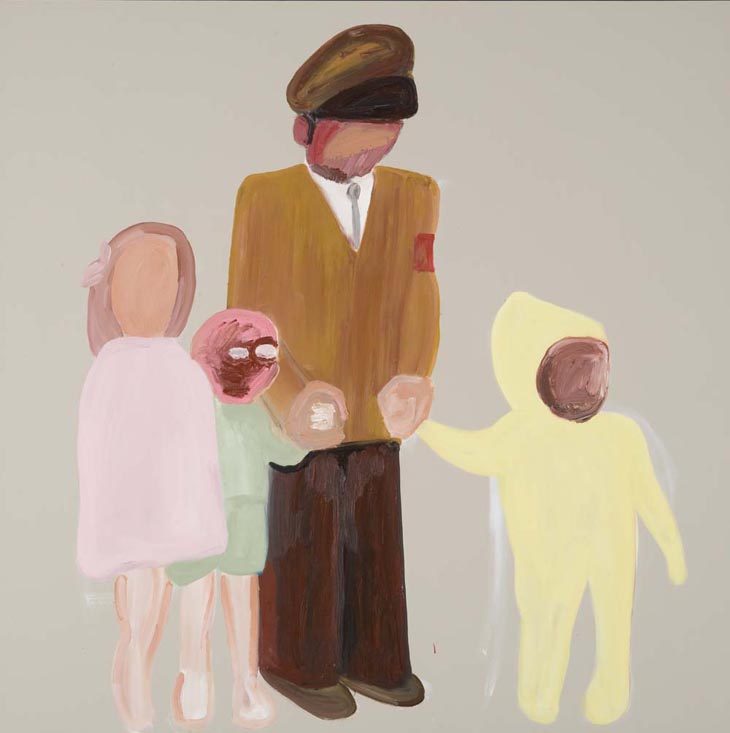
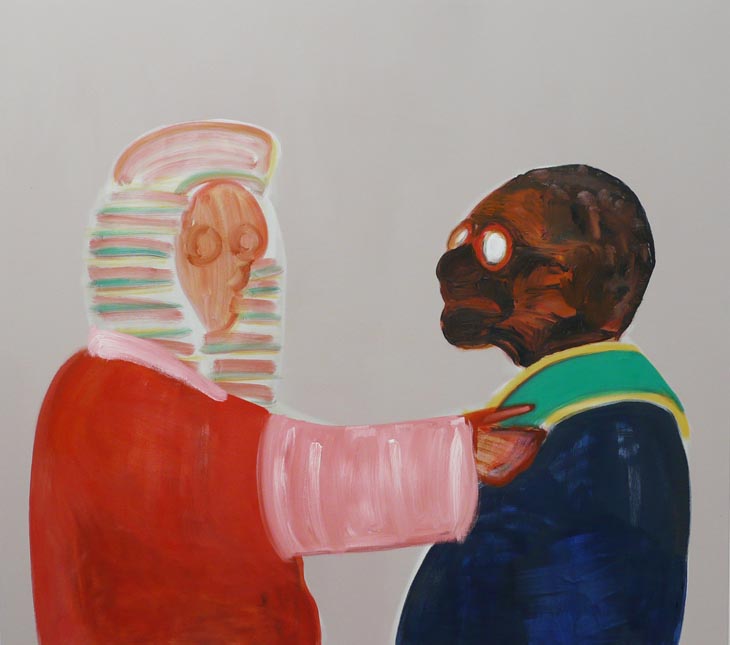
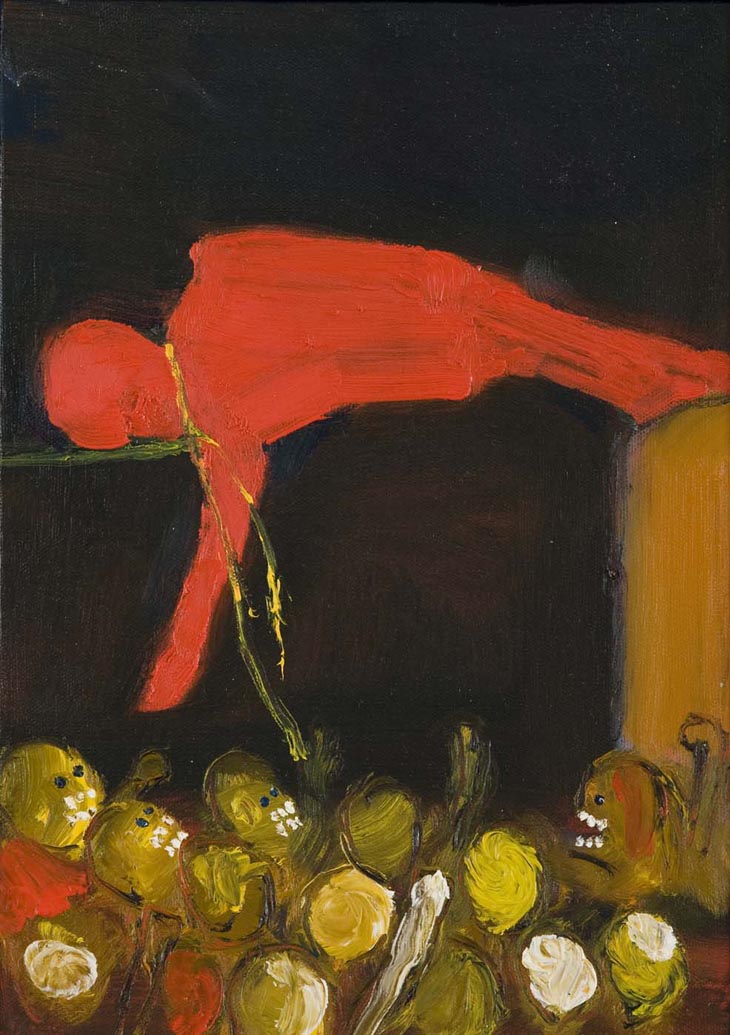
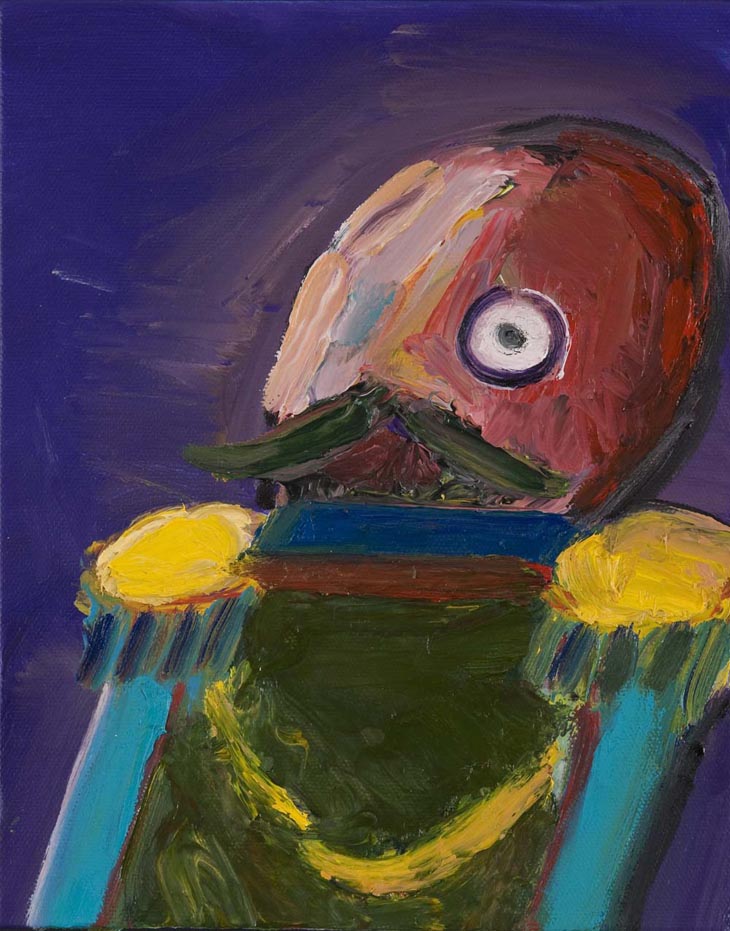

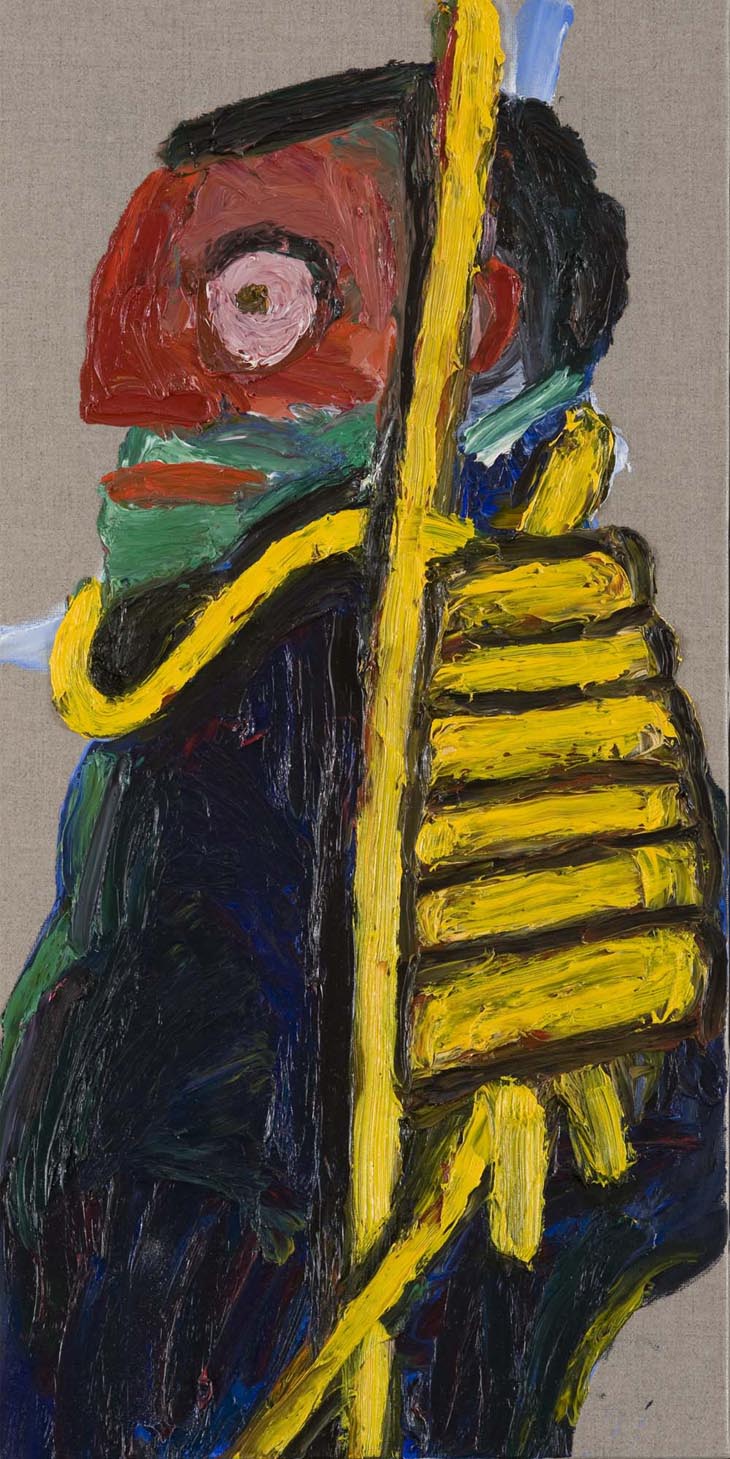
Carla Busuttil
“I have a broad, probably unhealthy interest in the history of violence, corruption and the rule of law, and examples of these can be found everywhere. The figures in all these works were sourced from a lot of different found images (from newspapers, the Internet, magazines) so they are loosely based on real people,” Carla Busuttil explains. “I usually use more than one found image as a source and sometimes combine ideas from other images or paintings so the figures end up becoming more fictionalized. However, behind each work is usually a story or idea and typically the people portrayed are figures in positions of power – some more powerful than others, but all figures I find fascinating. This fascination stems primarily from the element of power itself and its possible effect on people, rather than any specific opinion of individuals portrayed.”
“It is often said that power corrupts. As an artist, I cannot attest to the truth of such a lofty notion, however the visual and human languages of power and authority influence my own work. Power – be it political, physical, financial, religious or societal – seems to require the receivers thereof to adjust their behaviour in some way. Whether power can, in itself, corrupt may be a difficult discussion. However, it certainly has the ability to change the person or people in question – this I find fascinating. The process of seeking, gaining and ultimately retaining power is well established in our society – and typically comes with familiar markers. This provides rich source material for my work.†“My works are always exactly that, first a painting. It is important for me that my works are not restrained by judgment, but rather that there would be a tension between the (real or imagined) recognition of these figures and the way that they are painted. It is also important that the works are not seen as a political statement because I feel that, although art can and does form political commentary, art cannot be primarily political. It is restrained by its place in society. I read an article a short while ago highlighting that politics had all but disappeared from popular music, and songs relating to recent major historical events (9/11, natural disasters, Iraq war) are absent from record charts. I often get challenged regarding the use of political imagery in my work – it is definitely seen as somehow ‘uncool’. However, I would hate to see contemporary art go the same way as popular music and become entertainment only.†“I find it easiest to start a painting with a narrative in mind. So the lives of the people I paint are what draws me to representing them. I hope that their familiarity also gives the work another layer of intrigue. For example Mr. Showerhead is based on an image of Jacob Zuma and was painted before he became the president of South Africa. The title comes from an infamous South African cartoon which mockingly portrayed every image of Zuma with a shower attached to the top of his head. This was in response to comments he made in court regarding reducing the risk of HIV Aids by showering after intercourse with an infected partner. The painting makes him look like a strange kind of magician or clown figure, and the background is almost flag-like (with the ANC colours being used).†“My painting style, I think, undermines the importance of the figure by obscuring its recognition. The image holds a peculiar familiarity but remains awkwardly distant from reality. For the painting of The Big Man I wanted to make a portrait that had just the bare necessities to get a feeling and image across. The background is painted flat with two colours and is reminiscent of the ribbon of the medal that is pinned on a chest. The face is painted violently and thick. This begs the question of whether the subject becomes less important than the construction of it as an image. The style may be seen as being more significant than the content. The subject is a figure I find fascinating, yet from the image it may be difficult to determine the identity.†“Often my subjects may be well-known figures. However, I prefer to rely on visual cues, rather than depicting the figures as themselves. With the works Great British Smile, Wake up Rod, and Alles Ist Schwindel I had Margaret Thatcher in mind. Here the visual clues are the shape of the hair, the shoulder-pad-shaped body and the pearl necklace. The story I had at the back of my mind when painting a couple of these was of Thatcher’s statue being decapitated by vandals. Her legacy is an interesting one as she seems to polarize opinion. Some see her as a successful reformer, while others see a power-hungry dominatrix.†In Busuttil’s works, her characters are rendered with an almost cartoon-like simplicity: they’re often scathingly funny and sometimes down-right pitiful. Busuttil uses visual parody as a way not only to broach political criticism, but to challenge the notion of power itself. Though many of her figures represent the ‘worst of humanity’ Busuttil makes them seem sympathetic or clumsy to bring them down to confrontable proportions. Chairman’s famous image is reduced to a few perfunctory and brutal brush strokes – the minimum required to tap into collective consciousness. A ruthless power characterised by ego and self-importance, he’s envisioned as a diva perched on an imperial throne, all coiffed hair and ridiculous dental work. Through humour Busuttil evokes the unspoken horror of how leaders are developed gradually, and how we, under the spell of their public charisma, become passive participants in their deeds. Tata Ma Chance, Tata Ma Millions is an advertising slogan for the South African lottery. “The title is a cynical reference to an oft-prevailing attitude that positions of political power are also a route to financial wealth. A culture of graft and entitlement amongst senior civil servants is the subject matter of this painting.†Busuttil uses the properties of the paint itself, rather than just the image, to manifest critique. Caked on with grotesque impasto, her figure becomes a physical incarnation, a literal mountain of tarnishing brush strokes. The faux-naive drafting and simple bright colours lend a paradoxically sinister air to his ridiculed persona; his gluttonous jowls and slot-machine mouth belie the polish of his fashionably funky attire. “In The Air Is Filled With Children the image of Hitler is hinted at with the red arm band and brown uniform. But the figure is diminished in its oversized uniform and cowering stance. The title of the work comes from J. G. Ballard’s The Unlimited Dream Company – a surreal work about a man who learns to fly and devours children along the way. While it may be possible to identify the subject, my main aim was to create a strong immediate image through the sparse imagery and use of colour on canvas. Hopefully, the image can be both visually pleasing yet emotionally difficult at the same time.†“Don’t Tell Marley depicts Robert Mugabe being re-sworn in as president by a judge. When he first came into power over 25 years ago he was hailed by the west as a beacon of hope for post-colonial Africa. To celebrate the liberation of Zimbabwe Bob Marley played a large concert in the country. Today, the view of Mugabe’s rule has altered drastically and most western leaders see him as unfit, or evil. The question then is how the change occurred and whether power itself has a role to play. The figures in the painting are displayed in isolation; these wielders of power do not share the world with common folk. The judge is depicted in Rastafarian colours to illustrate the link with the original optimistic view of the subject; he’s set against the sparse lonely backdrop of the current view. Either way, I am sure that Bob Marley would disapprove of what has become of the country he baptized with reggae.†In More Like A Toy Than A Man, Busuttil’s figure stands with an exaggerated regimental posture, adorned with the caricature traits of an imperious leader: swooping aristocratic moustache and monocled-eye, effete body buttressed by the starched ornamentation of his uniform. The thick application and chiselled-like brush work give the impression of a rough-hewn effigy, a derisive image literally ‘carved’ from paint’s liquid matter. Every coarse swipe and gesture reveals a savage and boorish quality that undermines the decorum of her subject. One of the reason’s Busuttil’s paintings have such resonance is because their crude depictions are so apt. Her paintings are often not made in reference to a specific person, but embody a ‘character type’ embedded in our collective memories. ‘Rooi Gevaar’ is Afrikaans for ‘communist’ or ‘red threat’, and Busuttil’s soviet soldier looks very menacing indeed. Busuttil composes this canvas with a certain Cold War era flare, drawing from the tropes of movies and popular culture. The 60s design colours and authority figure posing are synonymous with outdated ideology. Rendered in conflicting tones of green and red, her painting is the embodiment of tension; its figure, teeth bared and face daubed on in near-boiling-point pink, looks as if he’s ready to explode. Busuttil designs A Necklace From The People as a double image of crime and punishment. The figure in the painting stands to rigid attention facing an unseen crowd. His rich Prussian blue uniform is laden with elaborate military brocade; on closer inspection however, these golden accolades form a noose. “I think it is interesting to try to draw a parallel between this painting and Matchboxes And Necklaces. They are both of very different moments in history but deal with similar ethical questions about the condoning of violence. A Necklace From The People references an image of Saddam Hussein’s execution whilst the title Matchboxes and Necklaces references a quote from Winnie Mandela: ‘With our necklaces and our matchboxes we will liberate South Africa.’"






